Kathmandu, Budanilkanth
- Kathmandu, Babar Mahal Main
- Kathmandu, Babar Mahal Inner
- Kathmandu, Dharahara
- Kathmandu, Bhimsenthan
- Kathmandu Durbar Square
- Kathmandu Drubar Square, Basantapur
- Kathmandu Drubar Square, Kumari Ghar
- Kathmandu Drubar Square, Kasthamandap
- Patan Machindranath
- Patan, KumbheShwore
- Patan MahaBouddha
- Patan Durbar Square Chowk
- Patan Durbar Square (Krishan Mandir)
- Patan Durbar Square View 1
- Patan Durbar Square View 2
- Patan Durbar Square, Mani Keshar
- Patan Durbar Square, Mul Chowk
Vishnu has many incarnations and in Nepal he often appears as Narayan, the creator of all life, the God who reclines on the cosmic sea from his navel grew a lotus and from the lotus came Brahms, who in turn created the world. Ultimately everything comes from Vishnu, and at Budhanitantha (admission free: dawn to dusk) the legend is set in stone. The 5m-long image of Vishnu as Narayan was created in the 7th or 8th century from one monolithic piece of stone and is the most impressive, if not the most important, Vishnu shrine in the country. It was sculpted during the Licchavi period, probably somewhere outside the valley, and laboriously dragged here. Narayan lies peacefully on a most unusual bed the coils of the multiheaded snake, Ananta (or Shesha). The snake-s 11 hooded heads rise protectively around Narayan-s head Narayan-s four hands hold the four symbols of Vishnu a chakra disc (represent- ing the mind), a conch shell (the four elements), a mace (primeval knowledge), and a lotus seed (the moving universe). During the early Malla period, Vishnuism went into decline as Shiva became the dominant deity. King Jayasthiti Malla is credited with reviving the popularity of Vishnu, and he did this in part by claiming to be an in-carnation of the multi-incarnated God. To this day, the kings of Nepal make the same claim and because of this they are forbidden, on pain of death, from seeing the image at Budhanilkantha. The sleeping Vishnu image. which lies in small sunken pond enclosure, attracts a constant stream of pilgrims, and prayers take place at 9am every morning (the best time for photos due to the angle of the sun). Vishnu is supposed to sleep through the four monsoon months, waking at the end of the monsoon. A great festival takes place at Budhanilkantha each November, on the day Vishnu is supposed to awaken from his long annual slumber. Non-Hindus cannot enter the enclosure, but there are some unobstructed views from outside the fence surrounding it.

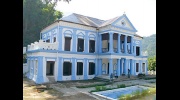
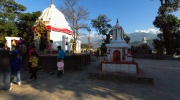
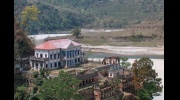
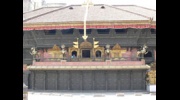
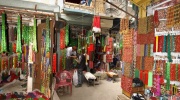
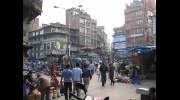
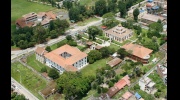
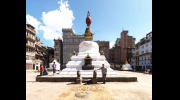
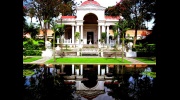

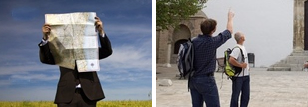






There is no comment yet for this virtual tour.
Be the first one to comment in this virtual tour »